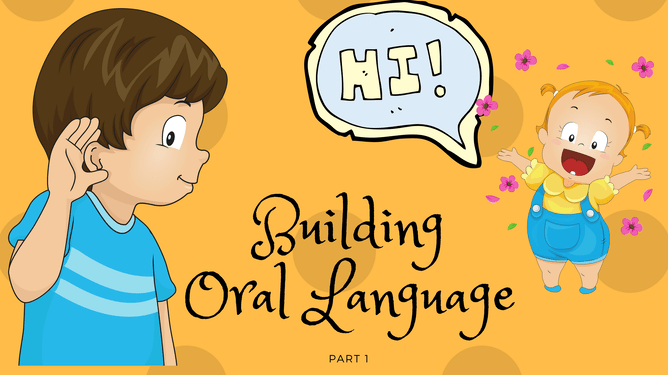Building Oral Language - Part 1
All children need strong skills in oral language! Children who enter school with poor oral language skills are at a significant disadvantage to their peers. Oral language is one of the most important basic building blocks to future reading and writing success.
What is oral language you might be asking? Oral language is the ability to understand language (i.e. understanding vocabulary, concept knowledge, following directions, understanding different sentence structures) and use language to express ideas, wants and needs (i.e. using the correct words, grammar, sentence structure).
Oral language is not only important for future reading and writing success. It also allows our kids to connect with others and builds their wellbeing and empowerment.
Without further ado, lets look at 3 really simple strategies you can start implementing today to support your child’s oral language skills:
Provide Specific Labels
Be aware of the language models you are providing to your child. Sometimes we might not realise that we are using very general language such as “Do you want that?” instead of “Do you want milk?” or “Give it here” instead of “Give me your shoe” or “look at that” instead of “look, the dog is running.” Make sure you and your family avoid using non-specific words like ‘this’ and ‘that’.
Model and repair
This strategy is a positive way to stress the words or grammar you want your child to learn. This strategy is best incorporated naturally in conversation. For example,
Child: Her falled down
Adult: Yes, she fell down
Child: Look, 2 dog
Adult: Yes, 2 dogs
Expand
This simple strategy exposes your child to more complex language and acknowledges what they say in a positive way. Expanding helps to build on and extend your child’s expressive vocabulary by adding a describing, action, location or naming word. Sometimes we can get carried away with our expansions so maybe try only increasing your child’s sentence by one word or phrase. For example:
Child: A truck
Adult: Yes…
Adding an action - The truck is driving
Adding a describing word - A big truck
Have a go at implementing these super simple strategies. You don’t have to implement them all at once. You might like to really focus on one until you master it and then move onto another. Please feel free to contact me if you have any questions about these strategies. Look out for our next blog where we will provide you with more strategies to support oral language at home.

